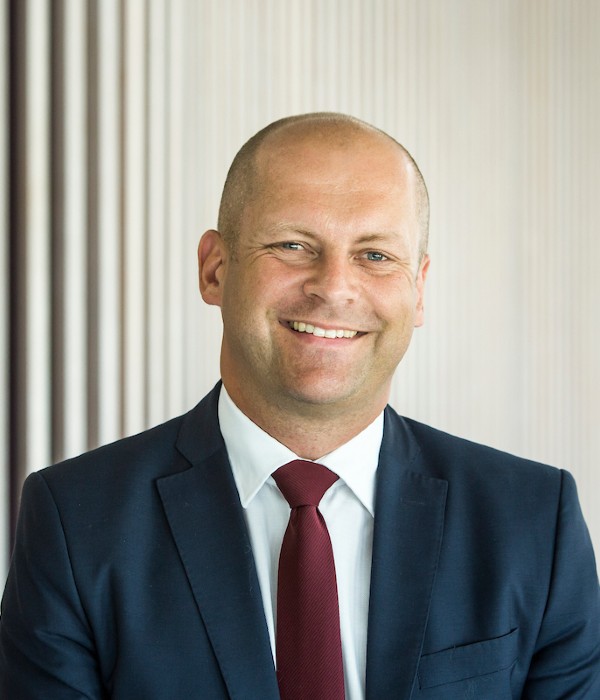When Klaus Sindahl joined Swedish biotech company Hansa Biopharma in 2019, the firm was still small, with a team of 40 people and no approved products.
Until then, and since the firm’s IPO on the Nasdaq Stockholm stock exchange in 2015, IR-related practices had been mostly outsourced, Sindahl explains, and the company was getting research coverage only through a few banks.
‘I saw an immediate need to bring communications back in-house to ensure we were relaying a consistent message while introducing the company to potential new investors and sell-side analysts,’ he tells IR Magazine.
‘We had – and still have – an exciting and important story to communicate, with a new, transformative drug that may apply to many different rare diseases so we wanted to position our platform story in the best possible way.’

With nearly 10 years of IR experience and a rising star award bagged at this year’s IR Magazine Awards – Europe, Sindahl says his team has been successful in taking the company’s equity story to the next level.
‘[We have improved] our communications through different channels such as sponsored platforms and a refreshed corporate website, and by hosting multiple events throughout the year,’ he explains. ‘By following this proactive strategy, we have significantly improved and diversified our shareholder base to include more institutional and global investors.’
Impactful start
Building shareholders’ trust in a young company that can’t rely on a solid track record of achievements and success in navigating difficult times can feel like skating on thin ice. Sindahl recalls that during his first year at the firm, Hansa Biopharma stocks experienced a bit of a slump, due to the approval of a new drug taking longer than expected.
‘We happened to be in an unusual situation in which we obtained conditional approval for Idefirix in Europe, while the Food and Drug Administration (FDA) in the US took a different [approach], requiring us to do a full Phase 3 study, despite very strong Phase 2 data,’ he explains.
‘As a result, we had to rebuild comfort [for] some of our shareholders, even though there was nothing wrong in our data, communications or approach with the FDA.’
Providing investors with a thorough understanding of the reasons behind the delay, giving background information and enhancing transparency were all key in winning back investors’ trust.
‘Today, investors appreciate the depth of our transparency and the metrics we report,’ says Sindahl. ‘And we certainly understand, as all publicly traded companies do, that sometimes there are forces outside of your control that will impact a company’s share price.’
‘Productive dialogue’
Sindahl notes that Hansa Biopharma today boasts research coverage from 12 banks and research institutions overall – so how did the firm go about securing that coverage while managing limited time and resources?
Identification is the first step, he says: ‘Over the years, we tried to identify banks and analysts we would like to work with and [with whom] we believe the Hansa story resonates well, given their particular industry focus and coverage lists.’
Operating via a targeting model that helps the business identify the right sell-side analysts and ensuring meetings with management remain productive is also fundamental. ‘It is obviously important that management leverage its time meeting with the right investors and analysts and we have had a good deal of success in developing a sophisticated targeting model,’ says Sindahl.
‘A lot of the introduction and preparation can be done in advance, so you can ensure that the most productive dialogue happens at the moment when a prepared investor meets management and critical outstanding questions for its due diligence can be addressed properly. This builds comfort for investors and analysts and results in a much more engaging dialogue with management.’
Ultimately, Sindahl stresses, winning analysts’ support will make a difference in attracting long-term investors ‘as their views are often a validation of your business and these relationships may unlock interesting reads for other companies.’
New horizons
In 2021, Hansa Biopharma announced it had confidentially filed for a potential US IPO and is now looking at 2024 as a potential year for the listing to come through. With roughly half its shareholder base made up of Swedish investors, Sindahl says a dual-listing would have more than one advantage.
It would widen the company’s market and unlock access to ‘long-term, sophisticated investors that understand technology, understand the opportunities in your sector and are willing to invest in a five-to-10-year time horizon.’
‘We are not just looking at the next quarter,’ says Sindahl. ‘[We need investors] that understand the potential for the technology we develop. When we speak to certain US investors [we find] they have certain mandates to invest in US-listed companies only.’










